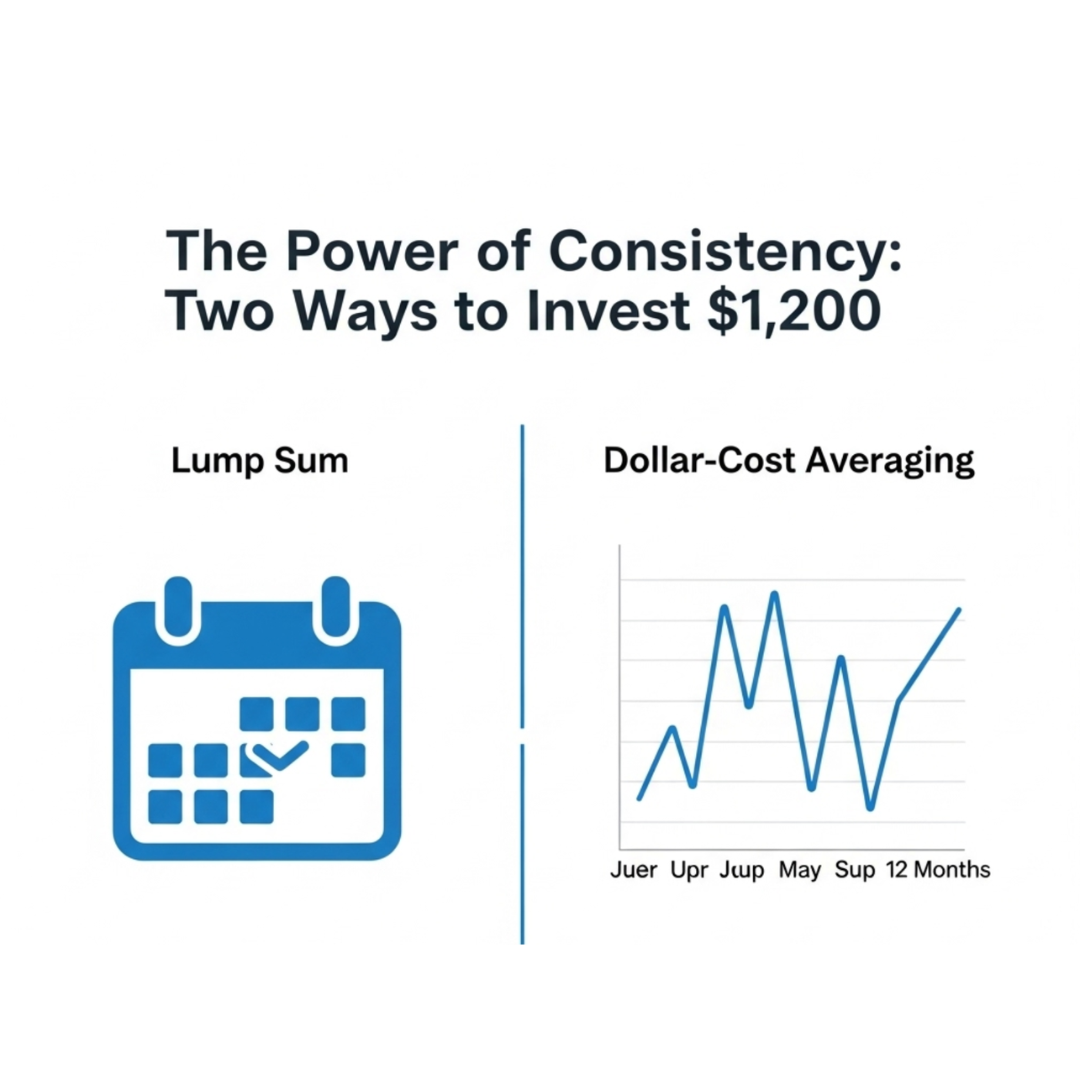Hey everyone, Kevin Lynch Jr. here.
We had a blog a few weeks ago talking about the “snowball effect”—the powerful idea of how consistent saving and compounding can build incredible momentum over time, even if it is a small amount. As long as it is done consistently it can have a powerful effect.. The concept is straightforward: a small snowball, with time and consistent rolling, can grow into a formidable force.
That leads to a practical question we hear all the time: "So, how do I actually do that?" Especially when market prices are constantly moving up and down, it can feel like trying to roll that snowball on a bumpy, unpredictable hill.
One of the most established strategies for this is known as dollar-cost averaging. That might sound like a complicated financial term, but the math behind it is surprisingly simple and directly fuels the snowball effect. Let's break down the numbers.
The Core Idea: Consistency Over Timing
Dollar-cost averaging is the practice of investing a fixed amount of money at regular intervals, regardless of what the market is doing. Instead of trying to "time the market" by buying when prices are low, you commit to a consistent schedule.
The goal isn't to be a perfect market timer. The goal is to be a consistent participant. Let’s see how this works with a simple, hypothetical example.
A Year of Investing: A Tale of Two Strategies
Imagine you've decided to invest in "XYZ Corp." You have $1,200 to invest for the year.
Strategy 1: Lump Sum Investing
You decide to invest all $1,200 on the first day of the year. Let's say the share price for XYZ Corp. is $30.
$1,200 invested / $30 per share = 40 shares purchased
You now own 40 shares. Simple enough.
Strategy 2: Dollar-Cost Averaging
Instead of investing it all at once, you decide to invest $100 every month for 12 months. Now, let’s imagine the share price for XYZ Corp. fluctuates throughout the year—as markets often do.

